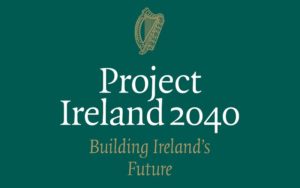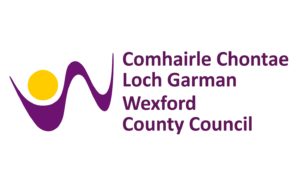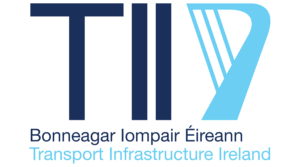Frequently Asked Questions
The project is the development of improved access to Rosslare Europort from the N25 National Primary Road to ensure and secure the sustainability and competitiveness of the Port, a key transport link to the European mainland and United Kingdom. The need for the project will be tested by the level of service provided to road users by the network now and into the future with a focus on road safety, traffic levels, journey times, operational performance and network deficiencies.
Rosslare Europort is the State’s second largest passenger port, and the fourth largest port in terms of overall tonnage. Significant growth is forecast in the coming years which will further increase the Port’s strategic importance for trade, business and tourism. The capacity and resilience of the access to the Port is critical to sustaining this strategic connection with the UK and continent. Improving access to Rosslare Europort is compatible with national, regional and local policies and plans.
The scheme will be progressed in accordance with all relevant statutory and non-statutory requirements and guidelines. Having confirmed the need for the scheme and its consistency with relevant policies and plans, a study area is defined, and constraints and features are identified which could influence the identification and assessment of viable scheme options. Initial feasible scheme options are identified and a non-statutory public consultation is held to invite comments or submissions on the findings of the constraints study and the initial scheme options. The scheme options are then assessed taking into account the comments and submissions received, and the preferred scheme option is confirmed and presented for public display. The design and environmental evaluation of the selected scheme option is the then sufficiently developed to facilitate submission for planning approval.The scheme will be progressed in accordance with all relevant statutory and non-statutory requirements and guidelines. Having confirmed the need for the scheme and its consistency with relevant policies and plans, a study area is defined, and constraints and features are identified which could influence the identification and assessment of viable scheme options. Initial feasible scheme options are identified and a non-statutory public consultation is held to invite comments or submissions on the findings of the constraints study and the initial scheme options. The scheme options are then assessed taking into account the comments and submissions received, and the preferred scheme option is confirmed and presented for public display. The design and environmental evaluation of the selected scheme option is the then sufficiently developed to facilitate submission for planning approval.
Public participation is an important and integral part of the development of the project and is specifically catered for at various stages during its development. Meaningful engagement is important to ensure that those with an interest in, or potentially impacted by the scheme are kept fully informed and that their vital feedback taken into account. A number of public consultation events and other stakeholder engagements will proceed during the development of the project. This process will provide an opportunity for the public to highlight any views or special interests to be taken into account in developing the scheme. Public views and feedback will play an important role as the scheme develops. The Project Team will consider inputs from members of the public, such as submissions received through the public consultation process, or identification of local issues.
The scheme presented in 2016 did not proceed through the planning process but the route corridor proposed at the time is currently incorporated into the County Development Plan. The scope of the current project differs somewhat from the previous scheme and will be fully integrated with development plans for Rosslare Europort. The current public consultation allows the public to provide us with their views on the potential scheme options that have been identified before an assessment and decision is made on the preferred scheme option. The current Scheme Option C corridor is similar to the route of the previous 2016 scheme.
The Study Area is the defined area under consideration within which potential options for the development of the scheme will be identified, developed, and assessed. Defining the Study Area is one of the earliest and most significant aspects of the option selection process. The Study Area should be large enough to encompass all scheme options that may be potentially feasible but not so large as to unnecessarily include large areas that realistically will not be directly impacted by the project.
The development of the study area is cyclical in nature as the findings of the constraints study and public consultations may instigate a re-evaluation of its extent. Also, as options are developed, if it is found that there are potentially viable options outside the study area, it can be reviewed and amended if necessary.
Once a study area has been defined all constraints within the area are identified to inform the identification of feasible scheme options and to facilitate the systematic assessment of the potential impacts associated with the options.
A constraint is something that could impose a limit or restriction on the development of the project or impede its progress. Constraints may be divided into three principal categories, namely:
• Natural Constraints – naturally occurring landscapes and features (including underground features) e.g. mountains, rivers, aquifers, conservation areas;
• Artificial Constraints – forming part of the built environment (including underground features) e.g. housing, schools, community facilities, groundwater wells, landfills, services and utilities, roads, rail, walking and cycle trails, archaeology and cultural heritage;
• External Constraints – planning /environmental legislation and guidelines; design standards; policy, procedural, financial and legal issues.
The Constraints Study identifies the nature and extent of constraints within the Study Area, at an appropriate level of detail. These constraints are then documented and mapped so that potential scheme options can be developed to take account of such constraints. The public consultation process is an important part of the constraints study as it allows the study team to garner local knowledge and information on constraints.
Potential scheme options are initially identified taking account of the constraints that have been identified within the Study Area. The initial development of scheme options is then guided by a number of factors including the following:
- Options that are responsive to identified problems and objectives;
- Options that are noticeably different and offer different choices;
- Options that are developed with environmental, safety and social considerations in mind from the start;
- The adoption of an incremental approach to the development of options. Such an incremental approach in this case involves options that encompass the continued use of the existing road corridor, investment to improve the existing road corridor and the development of a new road corridor.
Route corridors provide an indication of the area within which a scheme option will be developed. Route corridors do not represent the actual width of the final road design or the lands to be acquired. To provide some flexibility for the detailed design, the initial route corridors are generally wider than the final road scheme.
Route corridors may be adjusted in response to feedback and the results of further surveys and assessments. It is not anticipated that significant changes will arise and there is some scope within the corridors to allow for adjustments to route options as described above.
The ‘Do-Minimum’ option assumes that there will be no investment to improve the existing road apart from routine maintenance and improvements already committed. In this case the proposed N25 Ballygillane Roundabout project is included in the ‘Do-Minimum’ option as this project has already progressed through the planning process and Wexford County Council are committed to progressing separately with the project.
The inclusion of a ‘Do-Minimum’ option is standard for the evaluation of projects and is required to be assessed for public infrastructure projects. The Do-Minimum’ option acts as a ‘Base Case’ and other proposed options are then evaluated in comparison to this ‘Base Case’.
The ‘Do-Something Management Option’ seeks to utilise the existing road where feasible to achieve the objectives of the project through on-line improvements. Such measures might include bottleneck removals, road safety measures, and traffic management measures. In this case specific measures may include a mix of the following: the rationalisation of direct accesses onto the N25,provision of parallel service roads, left-in/left-out junctions, designated pedestrian crossing facilities, signalised junctions, and improvement works at Delaps Hill. This option would be developed to the “best possible standard” using the existing infrastructure.
The ‘Do-Something Development Option’ includes a new section of road and therefore requires new development away and apart from the existing road network.
The three Options (A, B and C) represent the adoption of an incremental approach to the assessment of scheme options from the smallest scale of intervention i.e. the ‘Do-Minimum’ Option, to the highest scale of intervention, i.e. The ‘Do-Something Development Option’.
Scheme Options are assessed under the following criteria:
- Economy
- Safety
- Environment
- Accessibility and Social Inclusion
- Integration
- Physical Activity
Feedback and comments received through the public consultation process will be considered by the project team when undertaking the assessment to select Preferred Scheme Option.
An Option Selection Report is prepared which presents the assessment and findings of the option selection process and identifies the preferred scheme option. The preferred scheme option is then presented to the public for information.
Cost estimates have not yet been prepared for the scheme options. Feedback from the public is required before proceeding with the assessment and evaluation of the options. Cost estimates will then be prepared for each of the options and will be evaluated under the ‘Economy’ criterion as described above.
To allow the project team to manage the inflow of queries and review and consider them fully, we are asking that such queries be submitted before 4pm on the 16th June. The project team will then endeavour to respond to the query as soon as possible, and within 24 hours if possible. General queries can continue to be made after this time via email, post and phone at the contact details provided on the website.
In order to consider all feedback received and prepare a post-consultation report, we would ask that all feedback forms (online or postal) be submitted before 5pm on Monday the 29th of June
The scheme is compatible with national, regional and local policies and plans. The National Development Plan/Project 2040 highlights the UK’s exit from the EU as emphasising the need to improve the quality of facilities at Rosslare Europort given its role in maintaining transportation linkages with crucial EU markets”. However the advancement of the scheme is subject to ongoing funding and statutory approvals.
Each property is considered a constraint and in so far as possible, the scheme will seek to avoid and/ or minimise impacts on residential properties. It is unlikely that residential property will be acquired in full or demolished, however small segments of residential land may need to be acquired to facilitate the scheme. If property acquisition is needed to facilitate the project, Wexford County Council and the project team will engage directly and comprehensively with affected property owners.
It is currently unknown if any of the lands required for the schemes will be acquired by a Compulsory Purchase Order (CPO). If any part of a person’s private land / property holding is included in the CPO, the land / property owner is entitled to appropriate compensation. This may also be the case for a person who may have an interest in any land/ property identified in the CPO. Compensation will be provided in accordance with CPO legislation. A guide to the CPO process and the legislation is provided by the Citizens Information Website.
New planning applications within the study area may have an impact on the delivery of a future road scheme. Once the preferred scheme option is selected and confirmed a planning corridor is usually adopted by the Council to protect the scheme from conflicting development. Planning applications may still be granted within the study area following consideration by the planning authority. Each application will be considered on a case by case basis and a considered engineering opinion will be formed in relation to the potential impact of the application on the scheme. In some cases, an application may be considered premature subject to the preferred route corridor being determined.
Not finding the answers you were looking for? Contact Us directly by clicking the button below and using our Contact Us Form >>
- Address
N25 Rosslare Europort Access Road
Wexford County Council
Carricklawn
Wexford
Y35 WY93
Ireland
customerservice@wexfordcoco.ie
- Phone
053 9196000






